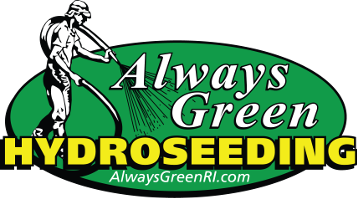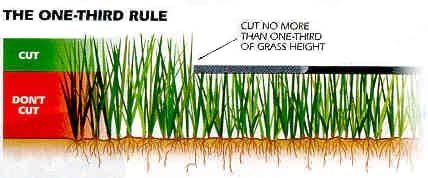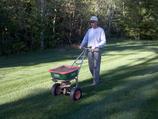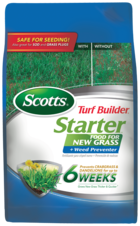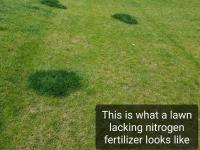About Always Green
Explore Our Site
©2024 Always Green Incorporated, all rights reserved.
Hydroseed Care
Watering
Seedlings are susceptible to desiccation, and the seedbed should not be allowed to dry after the first watering. A newly-seeded lawn will need to be irrigated two to four times daily depending on the weather. Water frequently enough to keep the top 0.5 to 1.0 inch moist, but avoid over-watering and saturating the area. Once the seedlings are two inches high, gradually reduce the frequency of irrigation and water more deeply. After the turf has been mowed two or three times, deep and infrequent irrigation is most effective.
You may walk on the hydro seeded surface when watering. Try to walk only on areas that are dry, and try to not disturb the mulch mat.
By watering regularly and keeping your new seedlings from drying out you insure the beginnings of an outstanding lawn.
Mowing
Mowing a new lawn will encourage the turf to fill in quickly. Be sure to have a well tuned mower with a sharp blade. Mowing should begin when the first few seedlings are tall enough to mow. You may only mow 10% of the plants in the first mowing, 20-30% of the plants in the second mowing, and so on. Most people wait too long to mow a newly seeded lawn, so mow early and often. Initially mow Kentucky bluegrass, perennial rye, and fine fescue at 1.5 inches and tall fescue at 2.0 inches. After the first three to four mowings, you can adjust your mower to the permanent mowing height which is 2.0 to 3.5 inches for Kentucky bluegrass, perennial rye, and fine fescue and 2.5 to 4.0 inches for tall fescue.
As always, never remove more than 1/3 of the grass blade at any one mowing. This may mean mowing twice weekly and every other week in summer. Returning clippings to the lawn can be very beneficial if done correctly. If you decide not to use a catcher make sure the lawn is dry and be careful not to make trails of grass clumps that will wilt your lawn.
Fertilizing
About one month after seeding, fertilize your new lawn using a high nitrogen fertilizer. We use a high phosphorus or "starter fertilizer" when hydroseeding your lawn. The phosphorus will stimulate root growth, and in the early stages it is important to get good root growth before you stimulate a vigorous top growth with nitrogen. If your new lawn is showing signs of color change, lime green and yellowing along with slow turf growth it is overdue for fertilizer.
New seedlings have poorly developed root systems and thus they cannot effectively absorb nutrients from the soil. Therefore, it is important to fertilize frequently after seeding to encourage establishment. Apply 0.75 to 1.0 lb N/1000 ft2 four weeks after germination and again eight to ten weeks thereafter. Assuming seeding in mid-August, these applications would be mid- September and again mid- October.
A new lawn will need more fertilizer for the first couple of years to enhance density. Certain species like Tall Fescue may perform adequately with lower annual fertilizer rates than species such as Kentucky bluegrass or perennial ryegrass. Rain and irrigation will stimulate growth and will usually necessitate more annual fertilizer than a dry summer.
Weed Control
Avoid using herbicides in newly-seeded areas until the new lawn has been mowed at least 3 times. A new product from Scotts® is now available to prevent weeds up to 6 weeks. Look for Scotts® Turf Builder® Starter® Fertilizer + weed preventer. (See image on left) This product can be used in place of the high nitrogen follow up fertilizer mentioned above.
There is little weed pressure in the fall so weed control may not be needed. Broad leaf weeds may become a problem in the fall, but these can be easily controlled with a broad leaf herbicide application in October or November, after the third or fourth mowing. Avoid using broad leaf herbicides in newly-seeded areas until seedlings have been mowed at least three times.
Continued Care
A regular lawn care program is essential to maintain a healthy lawn.
We recommend following an annual lawn care program. This usually
consists of 5 or more treatments that feed the lawn, control weeds,
grubs, insects and maintain proper pH of the soil.
If you are not comfortable or sure on how to care for you new lawn
after the 30 day germination period, we highly recommend hiring a
licensed lawn care provider. We are not responsible for your lawn
after the 30 day germination period.
Contact Us
TIPS & RESOURCES
Always Green, Inc. is a locally owned and operated hydro seeding company servicing all of Rhode Island. Since 2004 we have been providing hydro- seeding and erosion control services for residential and commercial properties. We specialize in planting quality home lawns for a fraction of the cost of sod.
In addition to our hydro seed and erosion control products, we continue to add additional services for all your landscape and lawn care needs. Explore our site to see all our products and services we offer.
The dark green circular spots is where a dog urinated providing urea the lawn needs. Similar to a high nitrogen fertilizer.

